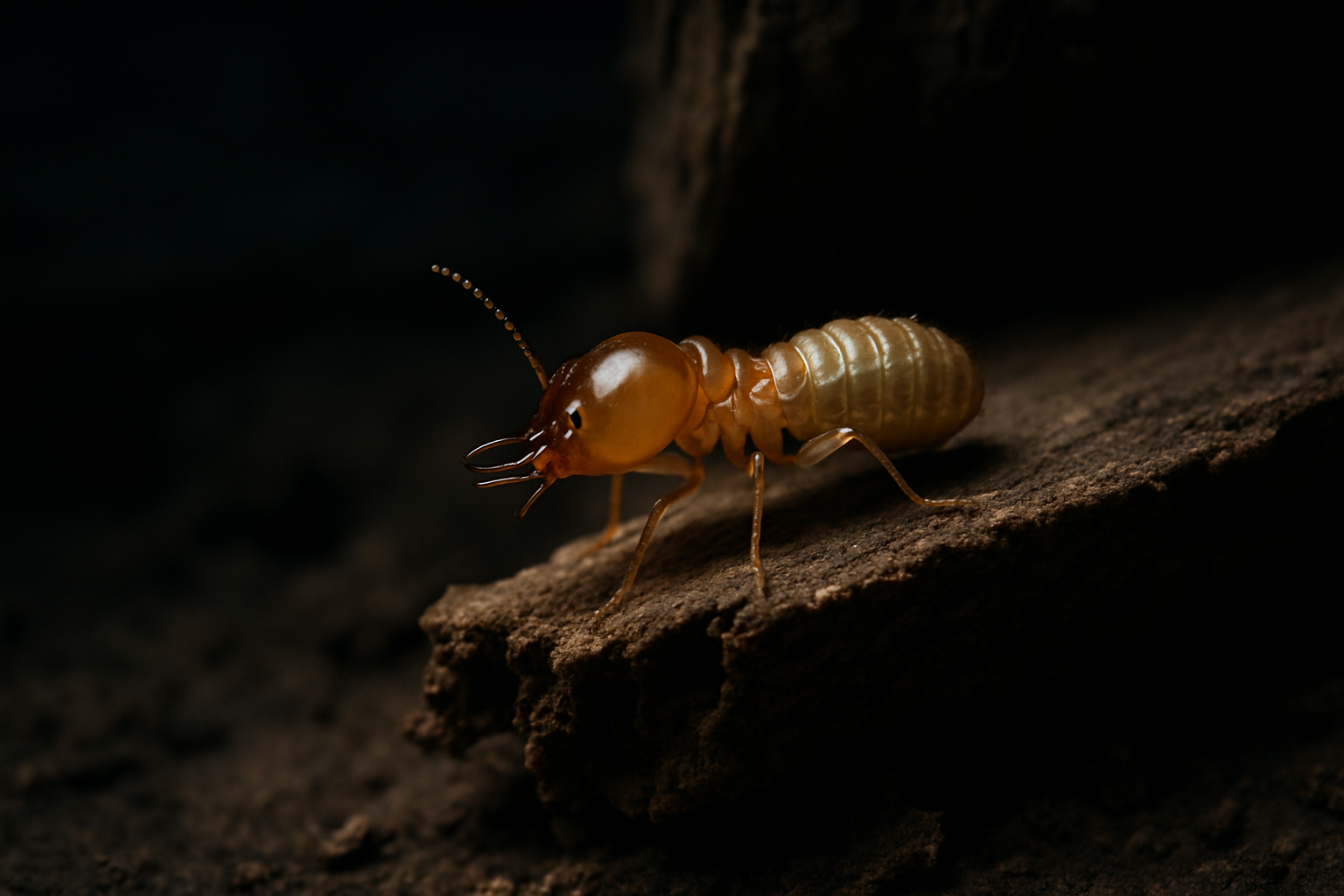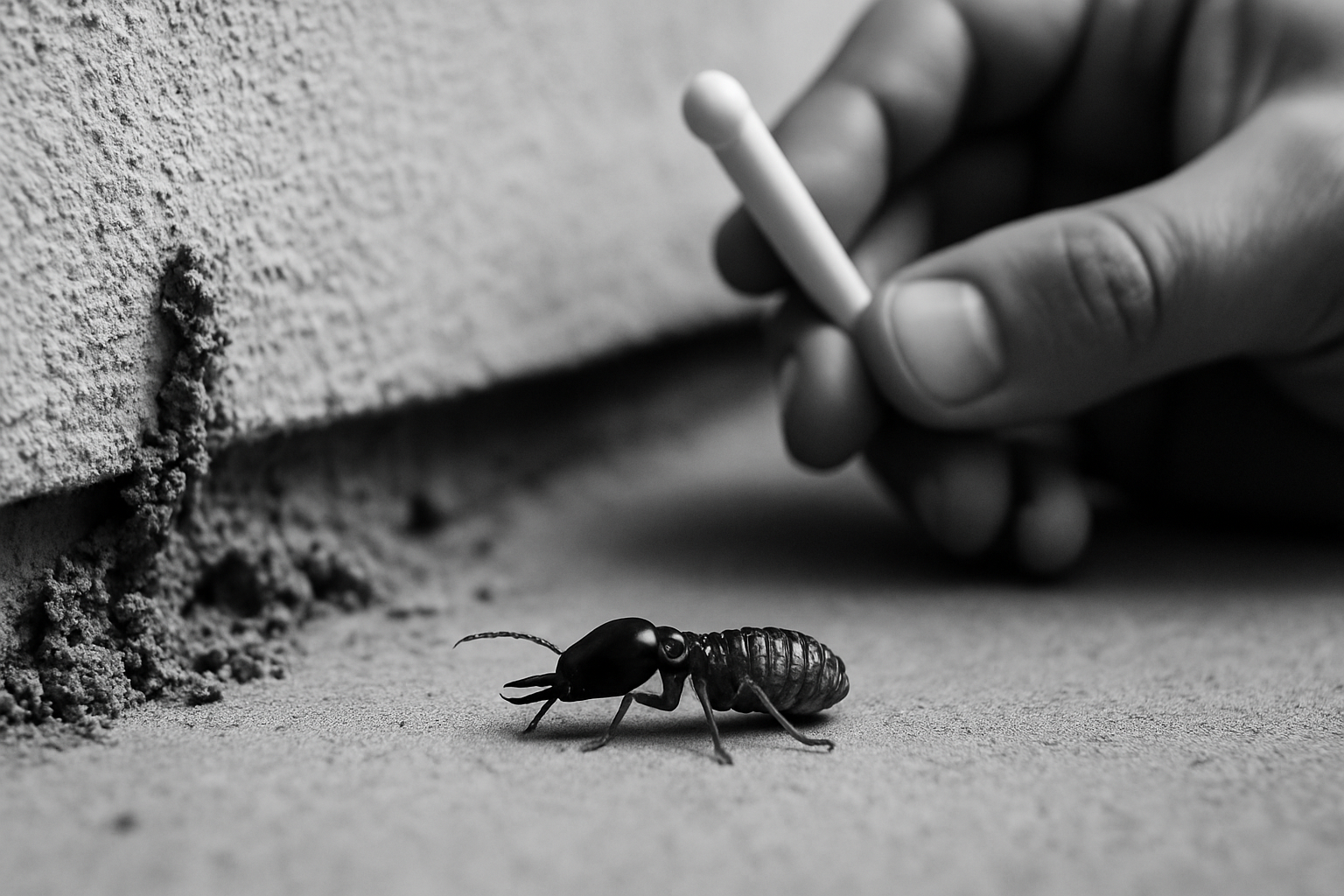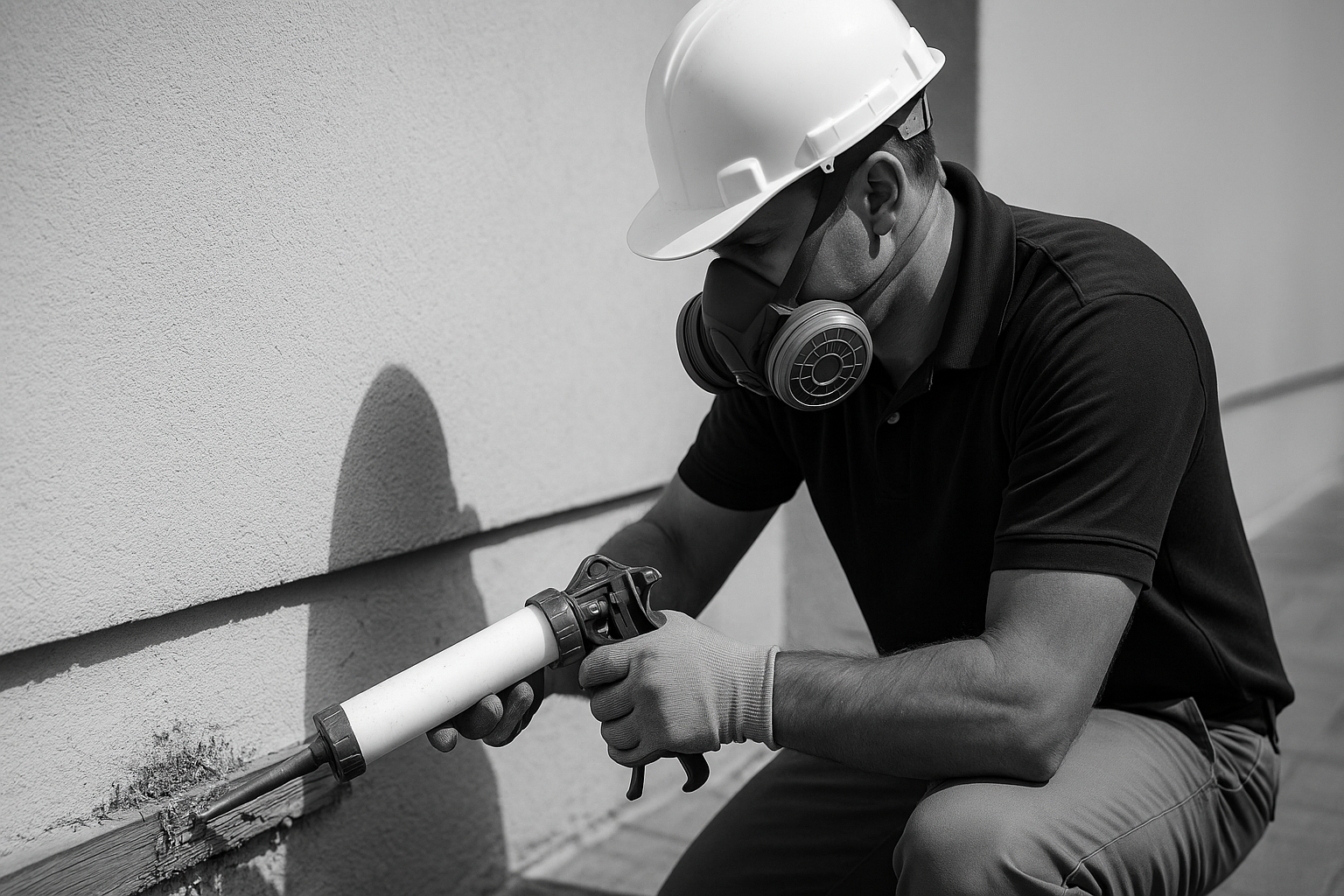Table of Contents
Understanding Termite Biology Oud Al Muteena 1
Termite biology Oud Al Muteena 1 plays a crucial role in addressing the termite challenges faced by residents and businesses in Dubai. Understanding the life cycle, behavior, and colony organization of termites helps in designing effective prevention and treatment strategies. Termites in this area thrive in the warm climate typical of Dubai, creating complex colonies that can gradually damage wooden structures and compromise building integrity if left unchecked.
This primary biological focus reveals a social insect system that includes a caste structure: workers, soldiers, reproductives, and the queen. Workers forage for cellulose materials, which are the main food source, while soldiers defend the colony. Reproductives ensure colony expansion, often led by a highly fertile queen.
Termites are detritivores that digest wood and plant fibers with the help of symbiotic microorganisms within their gut. Their ability to stay hidden and quietly consume structural materials makes them difficult to detect early without expert knowledge.
Common Termite Species in Dubai
In Dubai, including Oud Al Muteena 1, termite biology shows a prevalence of specific termite species adapted to the arid and urban environment. The most common pests belong to subterranean termites, which build underground nests that extend into structures.
Identifying the species is vital for professionals to recommend tailored treatments.
The Dubai Municipality Public Health Pest Control Section provides official guidelines on termite biology Oud Al Muteena 1 and effective management, focused on protecting residential and commercial properties against termite damage. Dubai Municipality mandates strict inspection and control measures to manage these pests effectively, emphasizing early detection.
Termite Infestation Signs in Oud Al Muteena 1
Recognizing termite activity early in Oud Al Muteena 1 can save property owners significant repair costs and stress. The context of termite activity in Oud Al Muteena 1 indicates that infestations often go unnoticed until structural damage appears.
Key signs include:
- Hollow-sounding wood when tapped, indicating internal damage.
- Presence of mud tubes on walls or wooden surfaces, protecting termites from dehydration.
- Discarded wings near windowsills or doors, signifying swarmers emerging to establish new colonies.
- Cracked or bubbling paint surfaces due to moisture accumulation from tunneling.
Because these signs can sometimes be confused with other issues, engaging experts knowledgeable in termite biology Oud Al Muteena 1 ensures accurate diagnosis and timely intervention.
Professional Termite Treatment Services in Dubai
In Dubai, professional termite treatment services that specialize in termite biology Oud Al Muteena 1 combine in-depth knowledge with advanced technologies to protect properties. Companies like Saniex, focused exclusively on Dubai, offer comprehensive solutions tailored to local termite species and environmental conditions.
Treatment typically involves one or a combination of the following approaches:
| Method | Description | Benefits |
|---|---|---|
| Liquid Barrier Treatments | Applying termiticide liquids around a building’s perimeter to create a protective zone. | Effective in preventing subterranean termites from entering the structure. |
| Bait Systems | Installing bait stations that attract termites, which then carry the poison back to the colony. | Targets the entire colony, including hidden reproductives. |
| Wood Treatments | Using chemical or natural preservatives on wood to make it resistant to termite attack. | Protects vulnerable wooden structures and furniture. |
Choosing a credible service provider familiar with the specifics of termite biology Oud Al Muteena 1 ensures safe, efficient, and lasting treatment. Regular inspections post-treatment are essential to maintain termite-free premises.
FAQ on Termite Biology Oud Al Muteena 1 and Treatments
What makes termite biology Oud Al Muteena 1 unique compared to other areas in Dubai?
The soil composition and urban structure in Oud Al Muteena 1 create a conducive environment for specific termite populations, requiring specialized knowledge for control.
How often should termite inspections be conducted in Dubai properties?
Experts recommend biannual inspections, especially in high-risk areas like Oud Al Muteena 1, to detect early infestation and apply treatments promptly.
Are termite treatments safe for families and pets?
Reputable providers use approved substances aligned with Dubai Municipality regulations, ensuring the safety of residents and pets when applied correctly.
Can termite biology Oud Al Muteena 1 impact the choice of termite treatment?
Yes, understanding termite species behavior and colony structure guides the selection of the most effective treatment methods.
What should residents do to prevent termite infestations?
Maintain low moisture levels, repair leaks, remove wood debris near buildings, and schedule regular professional inspections for prevention aligned with termite biology Oud Al Muteena 1 insights.
Conclusion and Call to Action
In-depth knowledge of termite biology Oud Al Muteena 1 is vital for effective pest management in Dubai’s local environment. Preventive measures, early detection, and professional treatments tailored to termite behavior protect properties against costly damage.
For residents and business owners in Oud Al Muteena 1 seeking expert termite solutions, partnering with trusted specialists like Saniex, offering services informed by detailed termite biology Oud Al Muteena 1 insights, ensures efficient protection matched to Dubai’s regulatory standards and environmental factors.
Don’t wait until damage becomes visible. Schedule a consultation today to safeguard your property with termite biology Oud Al Muteena 1 informed pest control services.
In-Depth Insights into Termite Biology Oud Al Muteena 1
Understanding termite biology is essential for effectively managing and preventing infestations, particularly in densely populated urban areas such as Oud Al Muteena 1, Dubai. This vibrant residential and commercial locality provides an ideal environment for termites to thrive due to the availability of wooden structures, humidity fluctuations, and the presence of soil and organic debris. In this section, we delve deeper into the key biological characteristics of termites that influence their behavior, colony structure, and adaptability, emphasizing information relevant to the specific termite biology of Oud Al Muteena 1.
Termite Species Commonly Found in Oud Al Muteena 1
Dubai’s desert climate, combined with urban landscaping and modern infrastructure, creates niche microhabitats that favor specific termite species. In Oud Al Muteena 1, the most commonly encountered termites belong to the subterranean category. These termites build colonies underground and often invade buildings via wooden supports or slabs in direct contact with soil. Key species prevalent in Dubai and particularly in Oud Al Muteena 1 include Reticulitermes flavipes (the Eastern subterranean termite variant adapted to warmer climates) and Coptotermes species, both notorious for their destructive potential in wooden and cellulose-based materials.
Subterranean termites require moist conditions to survive, and Oud Al Muteena 1’s irrigation systems, green parks, and occasional water leaks provide adequate moisture levels. This explains the high incidence of termite activity reported by local pest control providers, including Saniex Dubai, which specializes in termite management precisely in this area.
Termite Colony Structure and Life Cycle
Termite colonies are complex eusocial units with a rigid caste system, each member playing a distinct role. In the biological context of Oud Al Muteena 1, where infestations can develop rapidly in residential and commercial buildings, understanding the colony structure helps residents and pest controllers anticipate termite spread and damage.
- Queens and Kings: The reproductive pair sits at the heart of a colony. The queen can lay thousands of eggs daily, enabling the colony to grow exponentially in a short time frame. In Oud Al Muteena 1, warm soil temperatures accelerate queen fertility, making early detection crucial.
- Soldiers: These termites protect the colony with their strong mandibles. Their presence near structural wood is often a warning sign of nearby nest activity.
- Workers: Comprising the majority of the colony, workers undertake wood consumption, tunnel construction, and tending to the queen and young.
- Alates (Swarmers): Emerging seasonally, alates are winged reproductive termites that disperse to establish new colonies. Dubai’s mild winters and long warm seasons contribute to abundant swarming periods in Oud Al Muteena 1, typically observed during early spring and autumn following brief rainfalls.
Each caste’s function and lifecycle have significant implications for termite management strategies tailored for Oud Al Muteena 1’s environment.
Termite Feeding Behavior and Impact on Structures
Termites primarily feed on cellulose, a carbohydrate found in wood, paper, and other plant materials. In Oud Al Muteena 1, this translates into considerable risks for wooden doors, flooring, furniture, and structural supports in buildings. Understanding termite feeding behavior helps homeowners and property managers take preventive measures in line with Dubai Municipality’s pest control standards.
Unlike other pests, termites do not consume wood superficially; they hollow out galleries and tunnels within, compromising structural integrity without visible external damage until significant deterioration occurs. Their feeding occurs quietly over months or years, making early intervention critical.
The following biological traits contribute to termite damage severity in Oud Al Muteena 1:
- Symbiotic Digestive Systems: Termites harbor gut protozoa and bacteria that enable them to break down cellulose efficiently.
- Moisture Dependence: Termites require a moist environment to digest wood; thus, plumbing leaks and irrigation overspray in Oud Al Muteena 1 create ideal feeding zones.
- Tunneling Behavior: Subterranean termites build mud tubes as protective pathways to reach wood without exposure to oxygen, enabling them to traverse significant distances underground or within walls unnoticed.
Environmental Factors Influencing Termite Biology in Oud Al Muteena 1
Termite activity is closely tied to local environmental conditions. Oud Al Muteena 1’s desert climate, while typically arid, is punctuated by seasonal rainfall, urban irrigation, and temperatures conducive to termite survival year-round.
- Temperature: The warm climate accelerates termite metabolism and reproductive rates. Seasonal temperature variations are mild in Dubai, which means termites can remain active almost all year.
- Humidity and Moisture: Termites require moisture for survival. The presence of green landscaped areas, widespread irrigation systems, and occasional burst pipes in Oud Al Muteena 1 provide constant moisture sources.
- Urban Vegetation: Trees and shrubs planted around homes can harbor termite colonies, and buried wood debris from construction activities can serve as hidden food sources.
The interaction between these factors underlines why termite infestations in Oud Al Muteena 1 must be proactively monitored, especially given the Dubai Municipality guidelines that incorporate environmental risk assessments for pest control.
Adaptations That Make Termites Resilient in Urban Environments
Termites are highly adaptable insects, specially suited to survive and flourish in the urban fabric of Oud Al Muteena 1. Their evolutionary adaptations not only improve survival rates but also pose challenges to pest management efforts.
Key adaptations include:
- Social Cooperation: Division of labor and cooperative behavior optimize resource acquisition and defense, making colony eradication difficult unless all members are targeted.
- Secretion of Defensive Chemicals: Soldiers produce chemicals deterring predation from ants and other natural enemies common in Dubai gardens and parks.
- Concealed Lifestyle: Living mostly underground and inside wood means termites avoid exposure to pesticides unless baiting systems penetrate deeply.
- Rapid Colony Expansion: With queens laying thousands of eggs, populations can recover quickly if control measures are inconsistent or incomplete.
These biological traits highlight the importance of utilizing integrated pest management approaches in Dubai that include monitoring, baiting, moisture control, and education on structural maintenance.
The Importance of Studying Termite Biology Oud Al Muteena 1 for Effective Control
In-depth knowledge of termite biology Oud Al Muteena 1 is fundamental for sustainable pest management. This biological understanding informs local pest control protocols under Dubai Municipality and DHA regulations, ensuring treatments not only comply with safety standards but also provide long-term protection.
By appreciating the lifecycle timing, habitat preferences, and colony dynamics, pest control practitioners like Saniex in Dubai can apply targeted interventions at optimal times—especially around swarm seasons—and design habitat modifications that reduce termite-friendly conditions. Residents and building managers in Oud Al Muteena 1 can likewise benefit from this biological insight by implementing preventive strategies such as:
- Maintaining dry conditions near foundations by repairing leaks and optimizing irrigation practices.
- Removing wood debris and old tree stumps close to buildings.
- Ensuring proper ventilation in crawl spaces and basements to reduce humidity.
- Using termite-resistant construction materials compliant with Dubai Municipality building codes.
- Implementing regular termite inspections timed with seasonal termite behavior.
Ultimately, understanding the intricacies of termite biology in the context of Oud Al Muteena 1 equips stakeholders—homeowners, property developers, and pest control companies—to better safeguard Dubai’s built environment against these silent but devastating pests.





